Abandoned History: Chrysler and the Colt, Captive Economical Import Time (Part IV)

By the early Eighties Chrysler was deep into its product partnership with Mitsubishi, which in North America was most visible via the mutually beneficial Colt. A lineup of rebadged Mitsubishis, the Colt expanded from its rear-drive beginnings in 1971, morphing into a rear- and front-drive mix by the end of the Seventies. In the earliest part of the Eighties, the line was consolidated into a single front-drive hatchback model. Around the middle of the decade, it was time for a fifth-generation Colt and some more lineup expansion. But this time, Dodge and Plymouth dealers wouldn’t be the only ones selling a Colt.
The final model year of the three- and five-door fourth-gen Colt (front-drive Mirage) we discussed in our last installment was 1984. That same year, there was an all-new type Colt at Dodge and Plymouth dealers: an MPV. It was the first generation Mitsubishi Chariot, which entered production in Japan in ’83 for the ’84 model year. With its high roof and wagon-adjacent shape, the space-efficient Chariot was nearly a minivan and had a third-row seat for seven-passenger capacity. Dodge and Plymouth called it Colt Vista, and it was the slightly delayed replacement for the rear-drive Colt wagon that existed through 1981.
In its initial guise all Colt Vistas were offered solely with front-wheel drive, and the largest gasoline engine the model offered: A 2.0-liter inline-four. Dodge knew North American consumers liked more power, so the sporty 88 horses of the 2.0 were the way to go. It was the 4G63 engine, from Mitsubishi’s Sirius family. In the initial specification, it was naturally aspirated, and SOHC. It used a version of Mitsubishi’s MCA-Jet technology for cleaner burning and higher efficiency.
The 4G63 was a long-lived engine that found use in various Mitsubishi and Chrysler products between 1980 and 2007. It lived another life at Hyundai where it was used in products like the Sonata and Santa Fe, the latter through 2008. It had a third rebirth too when it became the engine of choice for Chinese manufacturers like Brilliance and Great Wall. It’s been in use in China since 2004 and is still in use today in at least four cars.
Other markets with the Chariot had smaller and less famous inline-four gasoline engines of 1.6, 1.7, or 1.8 liters displacement, or a 1.8-liter turbodiesel. Chrysler installed three different transmissions into the Vista: a three-speed TorqueFlite, five-speed manual, or the four-speed Twin-Stick borrowed from the outgoing Colt hatchback.
With the addition of the Colt Vista, Colt once again sold two unrelated models of different sizes. The Vista was considerably larger than the outgoing Colt hatchback and rode on a 103.3-inch wheelbase (93.7 for the five-door Colt). With an overall length of 169.1 inches, the Vista was considerably larger than the 154.7-inch five-door hatchback. Vista shared the same boxy and basic front-end look with its older sibling, but similarities ended there.
A permanent four-wheel-drive version was added to the Colt Vista in 1985 and became the most expensive Colt model. The four-wheel-drive version was offered in Canada too, also in 1985. Worth noting, four-wheel-drive Vistas used a slightly longer wheelbase than front-drive versions, at 103.5 inches. They had greater ground clearance too, about two inches over front-drive examples. Colt was selling a seven-passenger crossover in 1985.
Other market differences in Canada included Vista’s switch to the Eagle name in 1989. With the introduction of the Eagle brand in Canada, the Vista was renamed Vista Wagon and adopted by the new dealerships. This particular Colt Vista was not sold at Eagle dealerships in the United States. There were limited updates over the years, but by the end of its run, the Colt Vista adopted the DOHC version of the 2.0-liter engine, which had a better horsepower figure – 98.
After the Vista wagon was introduced, it was time for some modernization of the smaller Colt offering. The new hatchback for 1985 was more important than the larger Vista, given the typical Colt buyer thought of the nameplate as a hatchback outlet. The new car was once again a rebadged Mitsubishi Mirage, which entered Japanese production late in 1983 for the ’84 model year in Japan. This time, all body styles made the journey overseas from Mitsubishi’s Nagoya Plant: Three- and five-door hatchback, sedan, and four-door wagon. Other markets received a paneled version of the wagon for commercial use, but that was not imported to North America.
Though still a basic econobox shape, the fifth-generation Colt was much more modern looking than its predecessor. The very Seventies basic block look and chunky bumpers of 1984 gave way to more aerodynamic angles and a front end that had some detailing on it. Trim looked better integrated, and the new cars said Colt on them instead of Dodge or Plymouth. From some angles, the five-door hatchback in particular looked a bit French. Early models from 1985 and ’86 are identifiable by their recessed headlamps, while all later models used flush headlamps that looked more modern.
The new generation Colts consolidated themselves onto a singular wheelbase length, 93.7 inches. It was the exact same as the outgoing five-door Colt. Overall size went up, as the 149.8-inch three-door grew to 152.4 inches. The five-door expanded from 154.7 inches to 157.3 inches. The sedan was the midsize in terms of overall length at 162.4 inches, while the wagon was just larger at 162.8″. The new Colts kept with the times and were a couple of inches wider than their predecessors, between 63.8 and 64.4 inches. It was the first time Colt ever offered a sedan body style.
At its debut, there were two engines available on the Colt: A base carbureted 1.5-liter G15B engine good for 68 horses, and the 4G32T carried over from the outgoing turbocharged Colt hatchback. This time, the turbocharged engine was limited to upmarket versions of the Colt sedan (called Premier) and the hatchback GTS Turbo. The DL was the middling everyday trim, and the most basic models were labeled as E. But it was a little more complex than trims, as Chrysler figured out which Colts it wanted to market in the United States.
Initial offerings included the three-door hatchback and sedan from 1985 through 1988, alongside a five-door hatchback sold only in 1985. The hatchback was intended as the basest of base models, and was available only with the base engine, in E trim. Though the Colt Vista wagon was on sale, the smaller Colt wagon did not appear in the U.S. until 1988 and was a single-year offering. Other engines were added to Colts outside the Vista over time, specifically a 1.6-liter 4G61 engine with dual overhead cams appeared in the wagon. There was also a 1.8-liter 4G37 engine for wagons with four-wheel drive.
In Canada, a base model E sedan replaced the five-door for 1986, and the wagon made its way there in 1987. The regular Colt wagon was marketed as the Eagle Vista starting in 1988, alongside the larger Eagle Vista Wagon in 1989. For Canadians, the wagon was only available in DL trim but had optional four-wheel drive. Chrysler took the five-door Colt away from North America immediately since it didn’t want to cannibalize sales from its pride and joy, the Omni/Horizon.
As 1985 offered the most Colt choice to U.S. consumers, we’ll check out the pricing at the time. Three-door hatchbacks were available in E $5,572 ($14,848 adj.) or DL $6,377 ($16,994 adj.) trims plus the GTS Turbo (price unknown), while the five-door was only an E, for $6,229 ($16,599 adj.). The sedan was offered as the $6,692 DL ($17,833 adj.) or the aforementioned upmarket Premier at $7,609 ($20,277 adj.). The Vista wagon started at $8,784 ($23,408 adj.), while the 4WD version asked $9,871 ($26,065 adj.). For comparison, the Toyota Corolla started at $7,133 ($19,008 adj.) and ranged to $9,733 ($25,937 adj.) for a GTS hatchback. That meant the Colts represented serious value.
A problem for Colt arose the same year it introduced all these new body styles, however. Mitsubishi had established its dealership network in 1982 in the U.S. but spread across the nation quickly. In 1985 Mitsubishi wanted in on the Colt party and licensed the Mirage name for domestic use. The name was previously owned by Grand Touring Cars, a company in Arizona that used it for a racing series they called Mirage. Naming secured, they marketed only the three-door hatchback as a Mirage but also sold the Chariot (Colt Vista) as the Space Wagon. Their 1985 lineup was filled out by the rear-drive Starion sports car, and the sport compact Tredia.
Things stayed in stasis with Colt through the next couple of years, as trim shuffling and body styles settled into a norm. But that all changed with a new generation of Colts in 1989, as a new generation arrived and the United States would join in on the Colt-Eagle action. More next time.
[Images: Chrysler]

Interested in lots of cars and their various historical contexts. Started writing articles for TTAC in late 2016, when my first posts were QOTDs. From there I started a few new series like Rare Rides, Buy/Drive/Burn, Abandoned History, and most recently Rare Rides Icons. Operating from a home base in Cincinnati, Ohio, a relative auto journalist dead zone. Many of my articles are prompted by something I'll see on social media that sparks my interest and causes me to research. Finding articles and information from the early days of the internet and beyond that covers the little details lost to time: trim packages, color and wheel choices, interior fabrics. Beyond those, I'm fascinated by automotive industry experiments, both failures and successes. Lately I've taken an interest in AI, and generating "what if" type images for car models long dead. Reincarnating a modern Toyota Paseo, Lincoln Mark IX, or Isuzu Trooper through a text prompt is fun. Fun to post them on Twitter too, and watch people overreact. To that end, the social media I use most is Twitter, @CoreyLewis86. I also contribute pieces for Forbes Wheels and Forbes Home.
More by Corey Lewis
Latest Car Reviews
Read moreLatest Product Reviews
Read moreRecent Comments
- Ajla IMO, something like this really should be naturally-aspirated.
- Kjhkjlhkjhkljh kljhjkhjklhkjh Unless they are solid state batteries you BAN THEM. I like EVs... but EVs like to burn ... for days
- Kjhkjlhkjhkljh kljhjkhjklhkjh uh .. it looks like a VW golf got the mumps
- Kjhkjlhkjhkljh kljhjkhjklhkjh I CANNOT WAIT FOR SOCIAL SECURITY TO GET GUTTED.. No i am really serious. I am insulated thanks to 24 years at Symantec then Broadcom .. tons of retirement cash. but all the blue hairs and low income trump voters are going to lose benefits and jobs and i get to laugh allllll dayyyyy long in about 2-3 years.. CANNOT WAIT, POPCORN READY.
- Kjhkjlhkjhkljh kljhjkhjklhkjh no. to many '''''americans'''' just want a CUV or SUV according to sales numbers



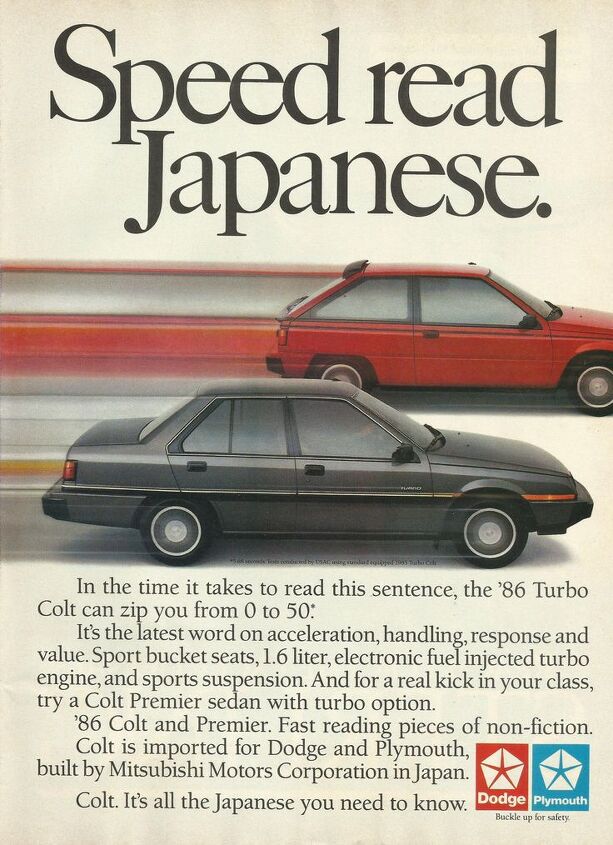




















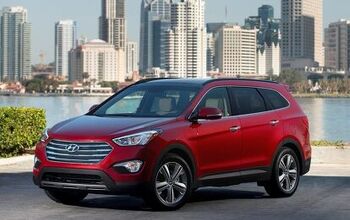

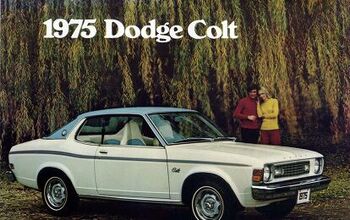
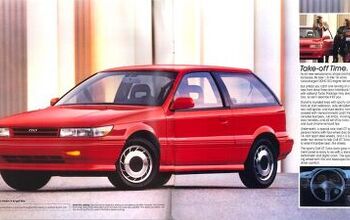
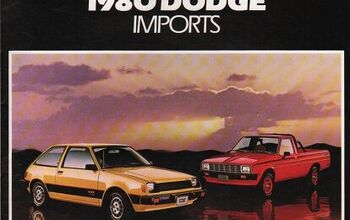
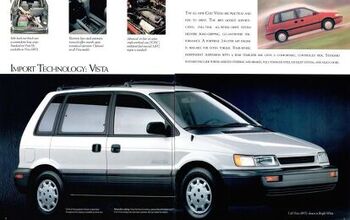
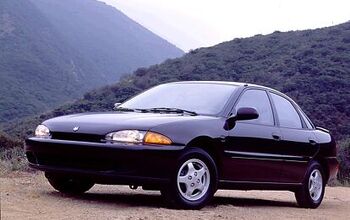










Comments
Join the conversation
Dodge Colt Turbo - with a rear window sticker that said "don't step on the gas unless you really mean it".
Nice writeup Corey. This is my 2nd favorite timeframe of the Chrysler/Mitsubishi collaboration (the 1st one being the early years of DSM). PS, is there any chance you could write an abandoned history episode about the Mitsubishi rebadged trucks sold as Dodge like the Ram 50, Raider and such?